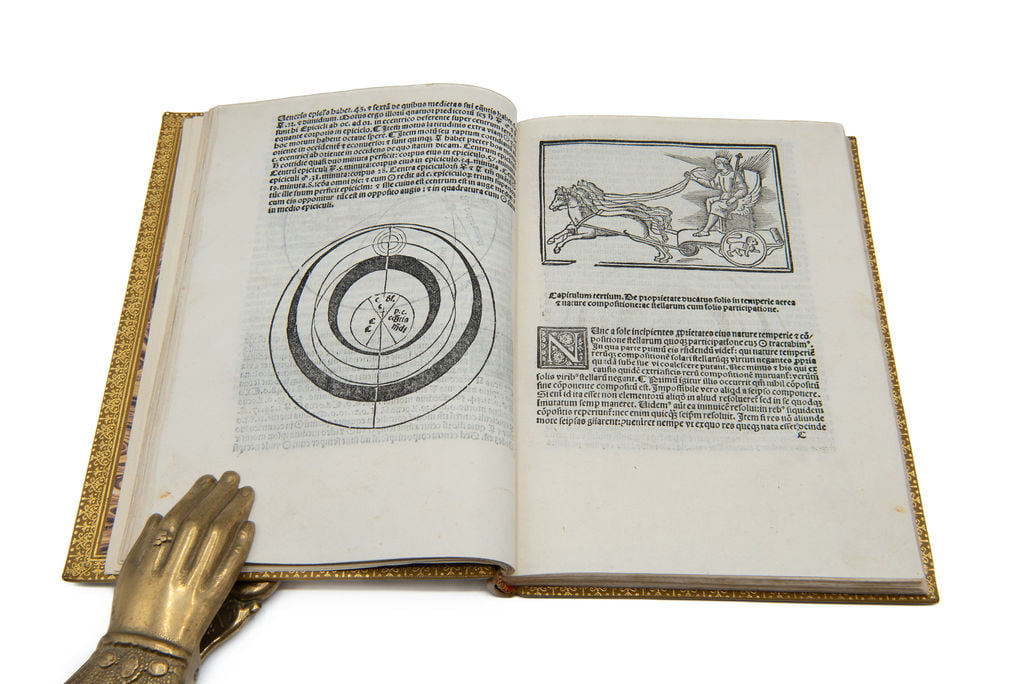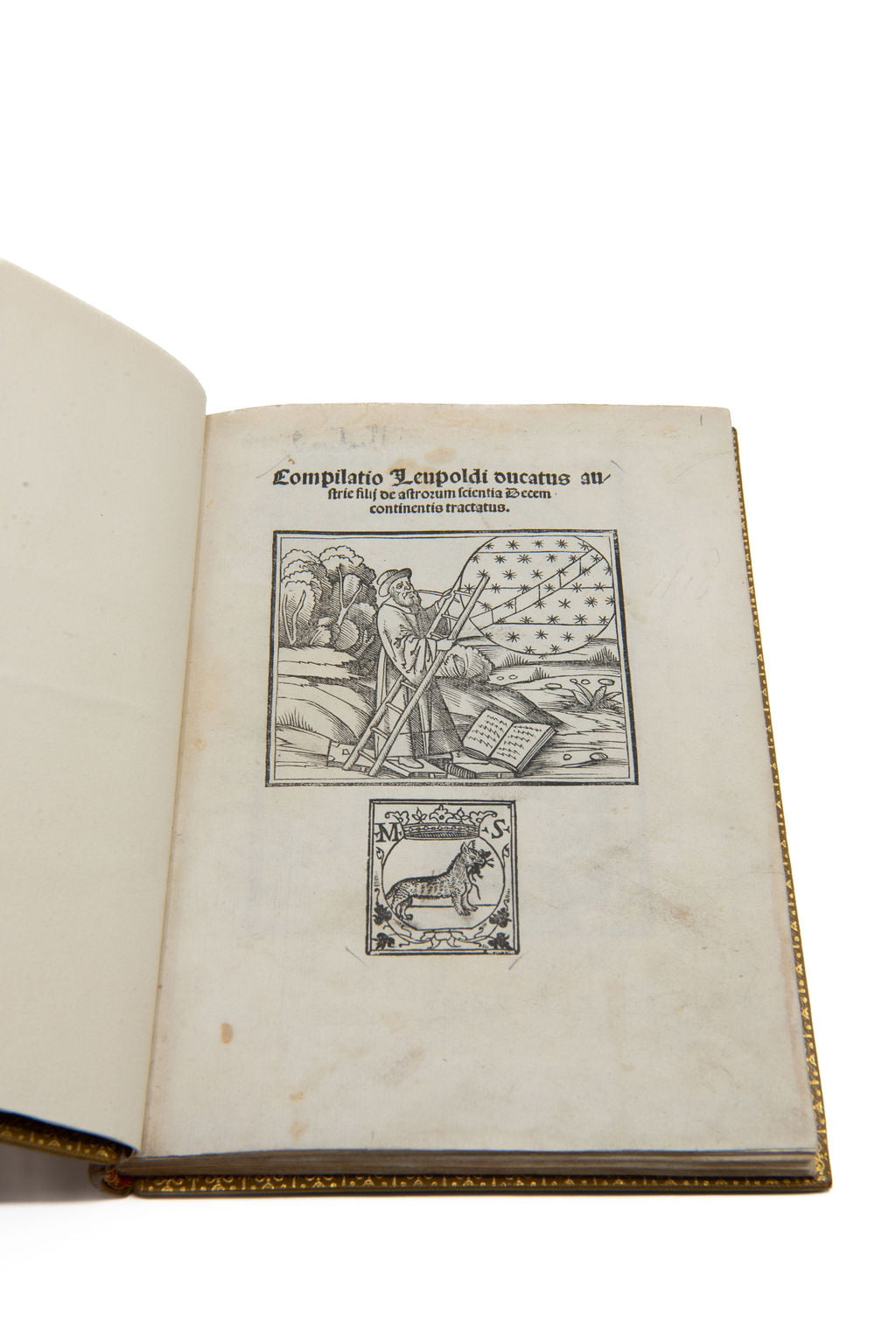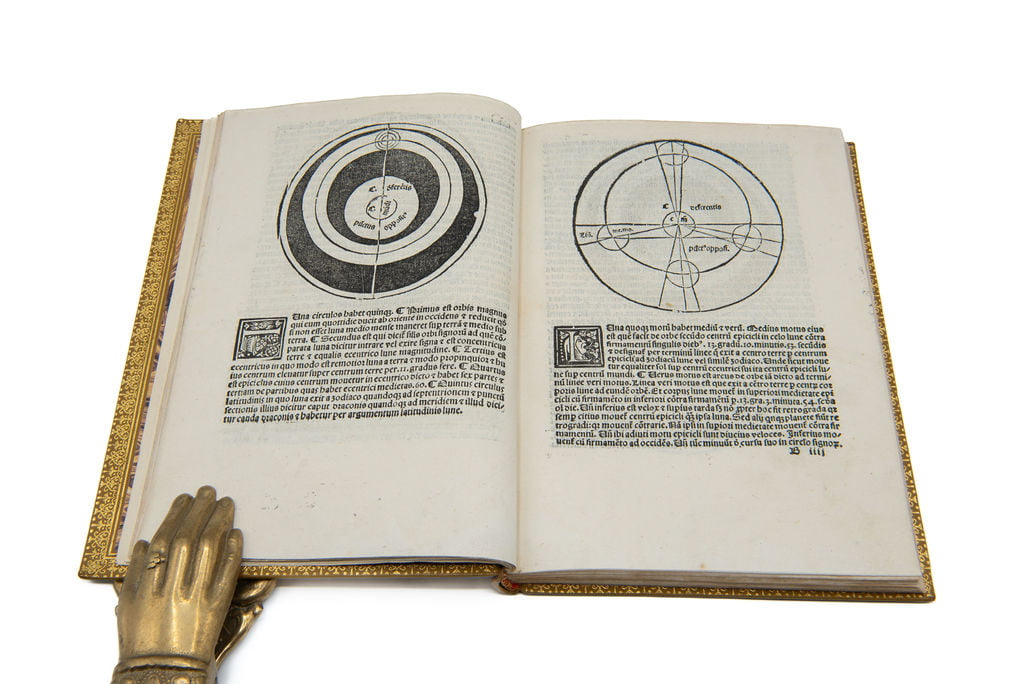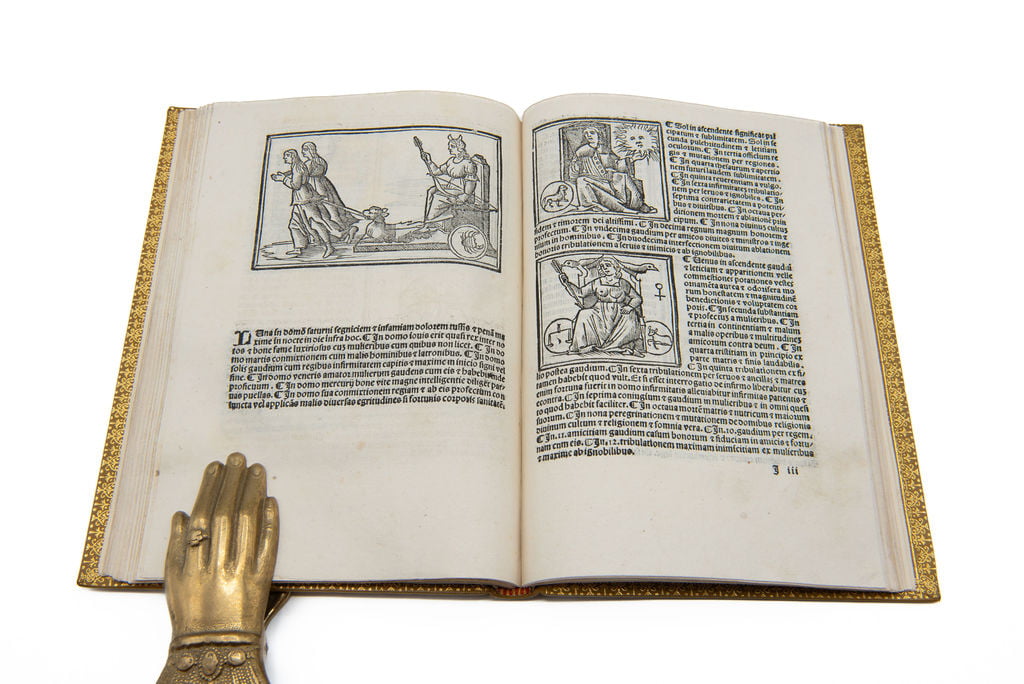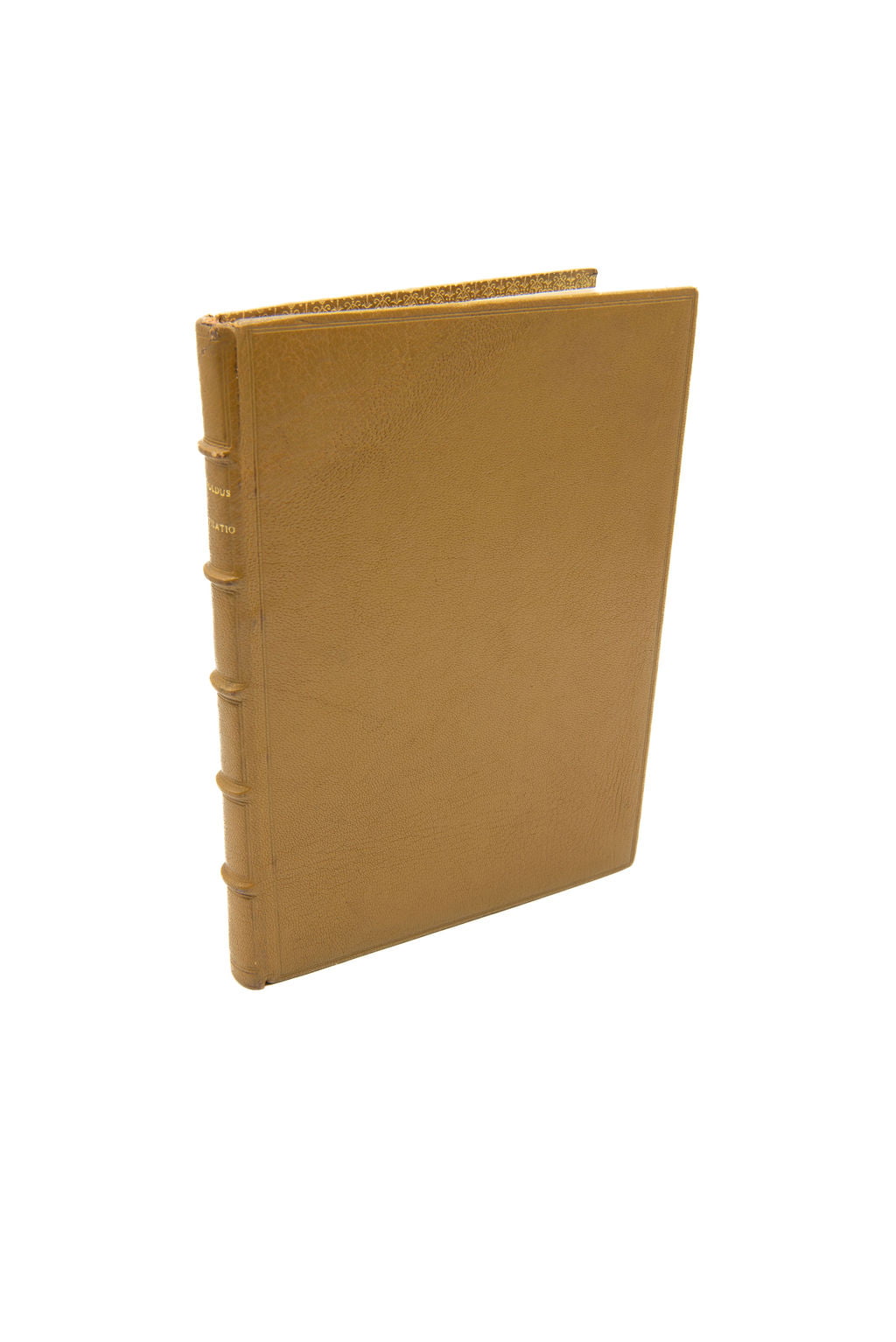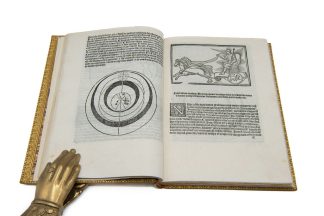LEOPOLD of Austria
ASTRONOMY, ASTROLOGY, AND METEOROLOGY
Compilatio … de astrorum scientia decem continentis tractatus
Venice, per Melchiorem Sessam & Petrum de Rauanis socios, 1520£4,500.00
4to. 94 unnumbered leaves. A-L M . Gothic letter. One large historiated initial, many fine white on black floriated initials, woodcut of astronomer with celestial sphere on title page, Messsa’s woodcut cat device beneath, numerous woodcut astronomical diagrams and illustrations in text, including two sets of zodiacs, one based on that of the editions of Hyginus, the sphera mundi, celestial figures of the sun, moon, Mercury, Saturn and Jupiter etc. driving various chariots, many repeated, astrological tables of predictions. Light age yellowing, A2 and 7 a little creased and soiled at edges, expertly repaired, closed tear restored in I1, the odd marginal thumb mark or spot. A very good, well margined copy, crisp and clean, in modern olive morocco, covers bordered with a double blind rule, spine with raised bands, double blind ruled in compartments, inner dentelles richly gilt.
Beautifully printed and finely illustrated second edition of this important and influential astronomy, by the 13th-century astronomer, Leopold of Austria, first printed by Ratdolt, in 1489. Primarily a work of astrology based on the writings of Albumasar, the sixth book concerns meteorology both from a theoretical and a practical point of view, and includes folkloric methods of weather prediction and general descriptions of winds, thunder etc.
Although virtually nothing is known of the author, the work was influential in the late Middle Ages, being cited by the great astronomer, Pierre d’Ailly, and admired by Regiomontanus, who proposed to edit it. This edition retains the dedication to Udalricus de Frundsberg, bishop of Trient, by Erhard Ratdolt, printer of the first. In the introduction Leopold states that he cannot take credit for the work as there was more than one author and he was just a ‘fidelis illorum observator et diligens compilator.’ He states his goal is to describe the motion of the stars, and to focus particularly on describing their effect. He describes astronomy as a necessary starting point and foundation for the study of astrology.
The Compilatio is divided into ten treatises: the first and second on the spheres and their motion. There is a dissertation on the comets at the end of the fifth book, beginning with a short discussion of Aristotle’s theories, which recounts the opinion of John of Damascus (676 – c. 749), who asserts, in his ‘De Fide Orthodoxa,’ that these celestial bodies announce the death of a King, and that they do not belong to the stars created in the beginning, but are formed and dissolved by God’s will. He then gives a list of the nine comets and their latin names, ending with the meanings derived from their presence in each Zodiacal sign. These are a transcription of Albumasar’s ‘De magnis Conjunctionibus.’ A very good copy of this beautifully illustrated and rare edition.
BM STC It. C16th (assigning it to Pencio) p.375. Adams L-516. Sander 3948. Essling 2081. Caillet 6636 (first edition only). Honeyman V 1989. Cantamessa II 4422. “Imponente e importante trattato in 10 libri”. Houzeau-Lancaster 4702 “fort rare.”In stock


